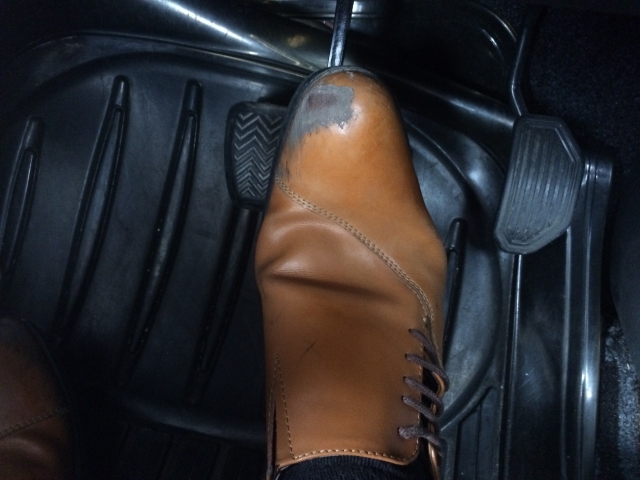I think that the word “exhaust brake” is not familiar to those who drive ordinary cars. Exhaust brakes are one of the auxiliary brakes that are installed on vehicles such as trucks and buses that mainly weigh 3.5 tons or more. This article introduces the mechanism, structure and usage of the exhaust brake.
What is an exhaust brake?
“Exhaust brake” is an auxiliary brake unique to diesel engines. It is an auxiliary brake that can be decelerated other than by the foot brake.
It is mainly equipped on large trucks and buses with a vehicle weight of 3.5 tons or more, and has the function of improving engine braking power.
Diesel engine has weak engine brake?
Diesel engines have weaker engine brakes than gasoline engines, requiring exhaust brakes.
This device is necessary, for example, when a heavy truck is full of luggage.
On a downhill, deceleration with only the engine brakes may lead to a situation where the weight of the vehicle is so great that braking cannot be performed.
In such cases, using the exhaust brake can provide the necessary braking force.
The braking power of this exhaust brake is said to be about 1.8 times that of the engine brake, indicating that it is a very powerful brake.
Therefore, the vibration generated in the vehicle body also increases, so even if it is equipped on a bus, it seems that it is often not used during actual operation.
Exhaust brake mechanism and structure
When the “exhaust brake” switch is turned on, when the foot is released from the accelerator, the movable valve installed in the exhaust pipe closes and the flow of exhaust stops.
Then, the exhaust pressure inside the engine increases, and the pumping loss reduces the engine speed and increases the braking force.
Pumping loss refers to the energy loss during intake and exhaust of the engine.
How to use the exhaust brake
To use the “exhaust brake”, you need to switch it on.
The switch is also used as a wiper switch or as a hazard lamp switch.
If you are traveling on a long downhill or carrying a lot of luggage, use one of the methods to operate the exhaust brake to reduce the load on the foot brake.
When the exhaust brake is turned off, it is automatically released not only by operating the switch, but also by depressing the accelerator or disengaging the clutch.
Activating the exhaust brake in places where it is not necessary, such as on level ground, places an unnecessary burden on the engine.
Remember to release the exhaust brake when it is no longer needed.
Auxiliary brake besides exhaust brake!
Why do you need a brake other than a foot brake in the first place?
For example, when the foot brake is continuously used on a long downhill.
The brake disk may cause a problem called “fade phenomenon” or “vapor lock phenomenon” due to frictional heating.
If you fall into this phenomenon, the brakes will not work and you will not be able to control the car.
Therefore, instead of relying solely on foot brakes, it is necessary to properly utilize auxiliary brakes such as engine brakes and “exhaust brakes” to provide vehicle braking power.
Auxiliary brakes that help brake the vehicle are not limited to exhaust brakes.
That is Jake Brake and Retarder.
Bosch BE923H Blue Disc Brake Pad Set with HardwareJake Brake
The “Jake brake” incorporates a hydraulic circuit into the cylinder head of the engine and adjusts the pressure inside the cylinder to obtain the braking force.
In the first place, the engine rotates continuously during the compression stroke of air in the cylinder.
However, Jake brakes open and exhaust the valve before compressing the air and turning it into rotation.
As the pressure in the cylinder drops, resistance is generated against the rotation of the shaft, which becomes the braking force.
Retarder
An auxiliary brake that can generate more braking force than the “exhaust brake” is equipped with a “retarder”.
In French, retarder means “delay, hinder”. As the name implies, it applies a load to the propeller shaft and delays its rotation to obtain braking power.
Exhaust brakes and Jake brakes are brakes that improve the power of engine braking, but retarders apply braking force by directly adding resistance to the propeller shaft.
There are several methods for the structure of the “retarder”, but mainly the fluid type or the electromagnetic type is adopted.
One of the features of the fluid type is that it has a large tolerance for heat generation and does not consume battery power, but has the disadvantage of being heavy and difficult to retrofit.
The electromagnetic type is a mechanism to generate braking force using electromagnetic induction by flowing electricity from a battery or the like.
It is easy to install later, but it also requires batteries and alternators to be strengthened, and there is a problem of high resistance to running even when not using a retarder.
Conclusion
You have introduced about “exhaust brake” and other auxiliary brakes.
“Fade phenomenon” is an accident that can occur in passenger cars.
When driving a passenger car, it is good to keep in mind the proper use of foot brakes and engine brakes.



